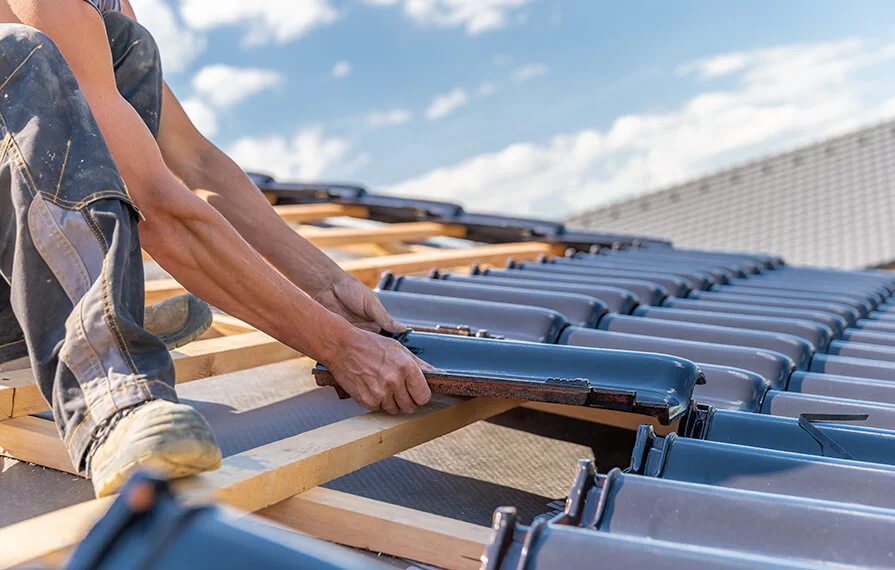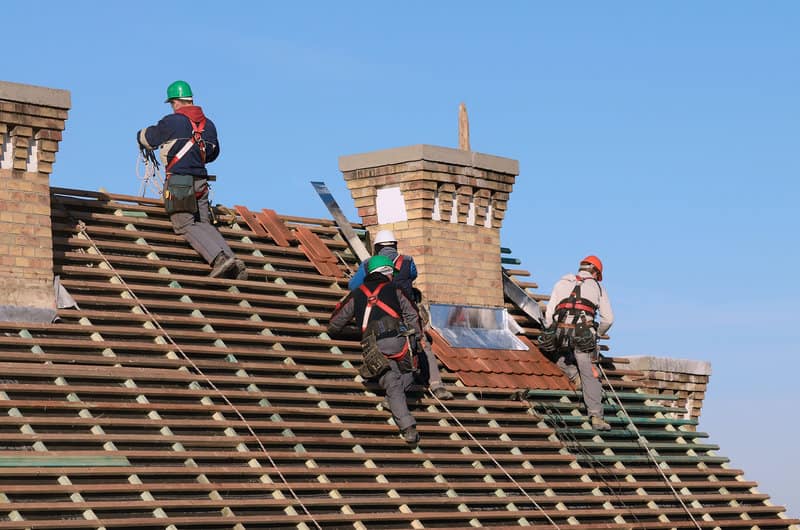A Comprehensive Guide to Effective Roofing Flat Roofing Installation
The complexities of flat roofing system setup demand a precise technique, beginning with a detailed understanding of different flat roofing system types and the vital materials required for optimal performance. An effective installment hinges not only on the choice of materials but additionally on the prep work and implementation of each step associated with the process. As we explore the critical points from prep work to upkeep, it ends up being apparent that overlooking also small details can considerably impact the roof covering's long life and efficiency. What particular techniques can guarantee a smooth installation that stands up to the examination of time?
Understanding Apartment Roofing System Kind
When considering level roofing systems, it is essential to recognize the various kinds available, as each deals distinct advantages and disadvantages tailored to specific requirements. One of the most common types of flat roofs consist of Built-Up Roof (BUR), Changed Bitumen, and Single-Ply membrane layers.
Built-Up Roofing is composed of numerous layers of asphalt and gravel, supplying excellent toughness and weather resistance. It is especially beneficial in areas vulnerable to severe weather problems yet may need even more upkeep as a result of its intricate building and construction.
Modified Asphalt is a popular selection for its ease of setup and adaptability. It frequently employs a torch-applied or self-adhesive approach, which can be beneficial for quick fixings and long-term performance. Nonetheless, its life-span can be shorter compared to BUR.
Single-Ply membranes, including Thermoplastic Olefin (TPO) and Ethylene Propylene Diene Monomer (EPDM), are acknowledged for their light-weight nature and power performance. These products are often preferred for commercial buildings due to their cost-effectiveness and simplicity of setup (Cleveland Roofing Specialists). They may not supply the exact same level of insulation as other choices.
Each roof kind needs careful consideration based on climate, budget plan, and certain task demands.
Necessary Products for Flat Roof
A variety of important materials are essential for the successful installment of level roofing systems. The selection of products directly impacts resilience, performance, and total performance.
One of the main materials is the roof covering membrane, which can be constructed from various materials such as polycarbonate polyolefin (TPO), ethylene propylene diene monomer (EPDM), or PVC. Each type provides unique benefits, consisting of UV resistance and versatility, which are vital for prolonged efficiency.
In addition to the membrane, insulation products play a considerable role in power effectiveness. Rigid foam boards or polyisocyanurate insulation are preferred options, as they offer excellent thermal resistance and dampness administration.
Furthermore, roof covering adhesives and sealants are important for making certain a leak-proof installation. These items should be compatible with the selected membrane to stop wear and tear over time.
Getting Ready For Installation
Correct preparation is essential for a successful level roofing system installation, as it lays the groundwork for a durable and reliable roof. Begin by conducting a comprehensive inspection of the existing roofing framework. Look for indications of damages, including leakages, rot, or poor drainage, which might compromise the new roof. Ensure that the underlying products are audio and can support the weight of the new roof parts.
Following, gather all required devices and products, guaranteeing that they fulfill market criteria. This includes waterproof membranes, insulation, flashing, and fasteners. Acquaint on your own with the supplier's requirements, as adherence to these guidelines is essential for guarantee objectives.
In addition, ensure that the workspace is clear of debris and obstructions to facilitate safe and efficient setup. Think about climate condition; stay clear of installment during hefty rainfall or extreme temperatures, which can affect product efficiency. Inform any kind of owners of the structure regarding the forthcoming job to make certain safety and security and reduce disturbances. By taking these primary actions, you can improve the chance of a successful level roofing system setup that satisfies both visual and architectural requirements.
Step-by-Step Installation Refine
With the foundation established via complete preparation, the following stage involves implementing the flat roof covering installation methodically. Begin by guaranteeing that the architectural deck is complimentary and clean Website from debris. Next off, set up a vapor obstacle to avoid moisture build-up beneath the roof material. This step is essential for keeping the roofing system's honesty gradually.
Adhering to the vapor obstacle setup, set insulation boards, ensuring they fit firmly with each other to minimize thermal connecting. Safeguard the insulation with appropriate fasteners based upon the roof covering type and regional structure codes. As soon as the insulation is in location, it's time to use the roof covering membrane. Depending on the selected product-- such as TPO, EPDM, or changed bitumen-- install the membrane according to the maker's requirements.
Ensure proper overlap at edges and seams to produce a water tight seal. Utilize adhesives, mechanical fasteners, or heat welding as needed. Set up flashing around borders, vents, and any type of roof covering visit this site right here infiltrations to boost waterproofing. After installment, perform a thorough evaluation to identify any potential issues prior to ending the task, making sure a durable and trustworthy flat roofing system.
Maintenance Tips for Long Life
Routine maintenance is essential to make certain the durability and performance of a level roofing system. One of the key tasks is to perform routine examinations at the very least twice a year, preferably in spring and loss. During these examinations, try to find signs of wear, such as sores, cracks, or merging water, which can suggest underlying issues.

Ensuring correct drainage is crucial to avoid water buildup. Check and clear rain gutters, downspouts, and scuppers to assure unhampered water flow. In addition, check seals around vents, skylights, and various other penetrations for any indications of degeneration, using caulk or sealer as required to keep a leak-proof barrier.
Last but not least, consider specialist upkeep services click here to read every few years for extensive maintenances. By sticking to these upkeep tips, you can considerably prolong the life of your level roofing system, ensuring it stays a trustworthy shield versus the aspects.
Verdict
Effective level roof covering setup necessitates a systematic technique incorporating complete examinations, product selection, and meticulous preparation. Complying with the laid out steps throughout the installation process makes sure the appropriate application of roofing membrane layers and insulation while enhancing waterproofing through effective blinking setup. Executing routine upkeep methods dramatically adds to the long life of the roof system. By complying with these guidelines, a sturdy and trustworthy flat roof remedy can be accomplished, efficient in standing up to various ecological conditions.
The complexities of level roof setup demand a meticulous technique, beginning with a detailed understanding of different flat roofing kinds and the vital products required for optimum efficiency.Proper prep work is crucial for a successful level roof covering installment, as it lays the groundwork for a effective and long lasting roof covering system. After installation, perform a complete evaluation to recognize any type of prospective issues prior to wrapping up the job, making sure a robust and trustworthy level roofing system.
